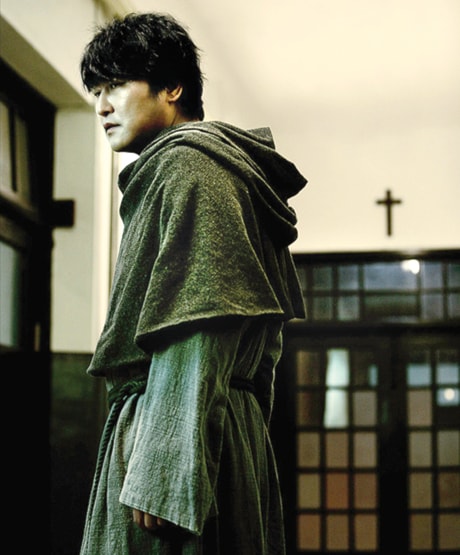CANNES, France — Amid the economic gloom, Asian movies are lighting up the Cannes Film Festival.
Six of the 20 films competing for the top prize at this year’s fest are from Asian filmmakers, offering audiences everything from troubled gay lovers to a vengeful father to a vampire priest.
Palme d’Or contenders include romantic tragedy Spring Fever, by China’s Lou Ye; vampire morality tale Thirst by South Korea’s Park Chan-wook; and revenge thriller Vengeance by Hong Kong’s Johnnie To.
Other Asian films competing for the prize are graphic crime shocker Kinatay by Brillante Mendoza of the Philippines, and Visage, the story of a Taiwanese director trying to make a movie in Paris, by Taiwan’s Tsai Ming-Liang. Taiwan-born Ang Lee, who brought The Ice Storm to Cannes in 1997, is back with U.S.-set hippie homage Taking Woodstock.
Festival director Thierry Fremaux said the lineup reflects the changing face of world cinema.
“Thirty or 40 years ago the Asian presence was not so important,” Fremaux said.
“Little by little, step by step in recent years, we have opened the festival to Asia — not only Japan, but China, Hong Kong and Thailand.
“As we have maybe less films from Eastern Europe than in the past, or less African films than in the past . . . we also have some more new continents.”
Only a handful of Asian directors have won the top prize in Cannes’ 62-year history, almost all of them Japanese. Just over half this year’s competition films are by Europeans, and just one by an American — Quentin Tarantino’s Inglourious Basterds.
Many observers credit inventive Japanese horror films like 1998’s Ring — remade in Hollywood with Naomi Watts a few years later — with whetting the international appetite for Asian cinema and encouraging Asian filmmakers to seek an international audience.
That’s reflected in a slew of Asian genre movies, with titles like Werewolf Erotica” and Kung Fu Cyborg, hoping to find buyers in the Cannes market, where hundreds of films from around the world are bought and sold. But producers also sense markets for artier fare.
Several of Asian entries at Cannes are distinguished by their restless cinematic energy. Kinatay takes viewers on a nerve-rattling road trip from the bustling streets of Manila to an isolated house of horrors, while Spring Fever is a fervid tale of desire set in the Chinese city of Nanjing.
Something of a taboo-breaker for its graphic gay sex scenes, Spring Fever was shot covertly with handheld cameras because its director was slapped with a five-year filmmaking ban by Chinese authorities after taking his last film, about the 1989 Tiananmen Square protests, to Cannes without permission in 2006. Park’s metaphysical monster movie Thirst was made with the backing of Hollywood studio Universal Pictures — a first for a Korean film.
“The world is discovering that the Asian film community is producing good films, and their reaction has been positive,” said Park, whose previous films include bloody chiller Oldboy.
“In turn, these positive reactions are helping the Asian film community produce better and better films.”
